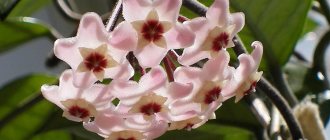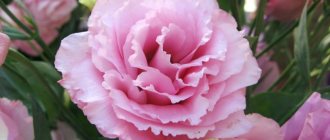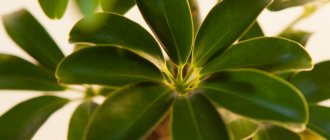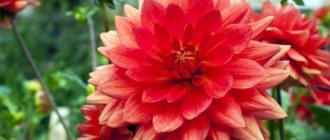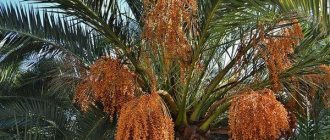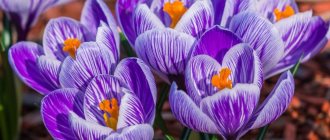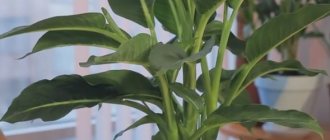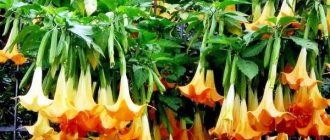Peach belongs to the Rosaceae family, Plum genus. Which country is his homeland is unknown. In the northern part of China you can find David peaches, which are an uncultivated variety of common peaches.
Peaches grow in Central Asia, America, Transcaucasia, and warm parts of Eurasia. China occupies the leading place in the cultivation of peach trees on an industrial scale.
Classification
There are several options for dividing varieties into groups. The main ones should be considered.
They are divided according to the type of fruit:
- nectarines (smooth, oval, medium weight);
- real peaches (large, tasty fruits);
- Fergana (medium size, flattened shape);
- Potanins (medium, with a pronounced edge).
Can be divided according to the speed of maturation:
- early varieties (ripen in July and August);
- mid-season (varieties ripen in September);
- late (they delight with fruits in October).
Frost-resistant varieties were bred specifically for cold climates. The tree can withstand up to -30 degrees. The varieties “Juicy”, “Winter-hardy”, “Fluffy early” can be classified in this category.
Varieties of peaches
Today there are a large number of peach varieties. They all differ in their shape, size, smell, taste, color, texture. All varieties are divided into early, middle and late.
Planting fruit trees - rules, timing and planting scheme + 81 photosCherry - description of the main varieties, rules of planting and care + 68 photos
- Cedar tree - description, cultivation, types of cedar and its beneficial properties + 77 photos
The most popular are Morettini, Kiev Early, Juicy, Golden Jubilee, Champion, Tourist, Aydinovsky Oblong and others.
Delicious "Jaminat"
The tree is not tall with medium-sized fruits. Peaches retain their properties for up to two weeks. Excellent for transportation and sale. After the third year of planting, they begin to bear fruit and produce a large harvest every year. The buds are not afraid of frost. Trees do not require special care. It is important to do timely pruning, fertilize the soil and control pests.
What can be wrong with peaches?
Diseases and harmful insects can greatly damage the peach. Most often, peach trees suffer from clasterosporiasis, leaf curl, powdery mildew, and moniliosis.
- Pine: a unique tree with a huge range of applications (77 photos)
Spruce - varieties and brief characteristics of the tree + 106 photos
Irga - beneficial properties, uses and contraindications + 71 photos
If a tree has become ill with clasterosporiasis for the first time, then copper chloride or “Meteor” is used to treat the peach. Subsequently, it is treated with “Horus” or “Topsin M”.
Before the peach begins to bloom, it is necessary to cut off the damaged branches and treat the cut areas with a solution of lime and copper sulfate.
Peach curl is treated with copper chloride or Meteor. In the spring, trees are treated with copper-containing products. Damaged foliage and shoots are removed before spores appear. It is best to burn them.
To protect the tree from powdery mildew, after it has finished blooming, it must be treated with Topaz, Topsin M or other appropriate preparations. Preventive measures can include regular removal of damaged branches, cleaning and burning fallen leaves, and loosening the soil.
If you have identified monoliosis, then the peach tree must be treated before flowering with “Horus”, during flowering with “Topaz” and after it ends, use “Topsin”. Diseased leaves and branches must be destroyed.
"Fig"
This variety of peaches, according to one version, was obtained in China as a result of crossing with figs. Although there are no taste similarities with it.
A distinctive feature of the fruit is its flattened shape. The fruits ripen at the end of summer, are juicy to taste and have good pulp. They can be transported, but cannot be stored for long periods of time. The small bone is considered another plus.
Pimples and tubercles on leaves
If the peach leaves begin to become lumpy and uneven, it is most likely a fungal disease. But sometimes this problem is caused by uninvited guests who hide on the back side of the plates.
— Aphids and weevils build their clutches on the back of the leaves, and from the outside it looks like pimples;
- Suspicious swellings and ulcers throughout the peach may be a symptom of bacterial cancer;
- Polystigmosis leaves behind orange swellings on both sides of the leaves;
— Cytosporosis leads to the fact that the peach bark and part of its leaves are covered with small pimples with ulcers.
Photo: 2sotki.ru
Juicy "Redhaven"
Round, large fruits are beneficial from an economic point of view. The species is also suitable for home cultivation. The pulp is tender, bright in color, has a delicate aroma and amazing taste.
From one tree you can collect up to 100 kg. Classified as an early ripening variety. Disadvantages include low frost resistance. Timely watering, pruning and fertilizers guarantee high yields.
"Irganaysky late"
Bright and large peaches. From the moment of harvesting, they can be stored for up to 10 days without loss of taste. The pulp is tender, sweet and sour taste. The disadvantage is late fruiting.
The harvest can only be obtained 5 years after planting. The variety is resistant to light frosts. From a commercial point of view, this variety is universal.
Pale and light leaves
The peach seems to fade if the conditions in which it grows are not suitable. Usually it is enough to adjust the regime, and the tree will recover on its own.
— If there are not enough nutrients in the soil, the peach will grow weak and sickly;
— The production of green pigment depends on photosynthesis, and it requires a sufficient amount of light;
— To ensure that the green mass is lush and thick, be sure to feed the peach with nitrogen from the very beginning of the season;
— Ticks suck the vital juices out of the leaves so intensely that they fade and lose color.
Photo: niltarim.com
Diseases of strawberry leaves: descriptions with photos, treatment
"The Ruby Prince"
Peaches ripen in July. They can be stored for a long time without loss of appearance and taste. The fruits can be harvested for the winter. They usually reach up to 300 grams. Sweet and yellow flesh. The variety was bred by American gardeners and is widely used on an industrial scale.
- A touching and original gift – a bouquet of wildflowers
- Greenhouses and greenhouses made of polycarbonate
- The importance of fresh flowers in the office
Features of cultivation in different regions
The main problem in growing this crop is wintering.
Most peach varieties die at a temperature of -20°C. More winter-hardy varieties tolerate temperatures down to -27°C for buds and -35°C for wood.
However, these figures are considered by many gardeners to be overly optimistic, so even in regions with more or less warm winters, they try to somehow cover the peach for the winter if possible.
Regions with warm climates
Growing peaches in Moldova
Without changing the standard “layout” of the tree (a trunk and several skeletal branches), the crop can only be grown in the south of Russia, Ukraine and southwest Belarus.
The regions in which the peach feels relatively good in the form of an ordinary tree include: Kuban, Rostov region, Astrakhan, the Caucasus, Kherson, Nikolaev and Odessa regions in Ukraine, as well as the Brest region, located on the territory of Belarus.
Growing in the Middle Zone
Growing peaches on horizontal trellises in cool climates
The central zone of Russia, the Moscow region, the Black Earth and Volga regions are already risk zones for growing classic peach trees. Of course, you can wrap the trunk with several layers of thermal insulation for the winter, and hang protection from a special heat-insulating fabric on the crown, but this will take a lot of time, and besides, this method is not cheap.
In such regions, peaches are grown in the form of low trunks with 2-3 rows of branches on each side of the trunk. Such a design is much easier to protect from frost and other environmental factors (in particular, strong wind).
The crown of this method of formation consists of 4-6 branches, which should be placed as close to each other as possible. The optimal distance is 20 cm. Every year, at the beginning of spring (preferably before the time of sap flow), cyclic pruning of trees should be carried out.
It is made according to the same scheme as grapes: several upper annual branches are cut to distances of up to 30 cm, and the lower branches located under them are cut to 10 cm. Accordingly, if there are six branches (three rows), the top one is cut to 50 cm, the middle one is 30 cm, and the bottom one is 10 cm.
To prevent excessive growth, in mid-summer, pinch out all young branches that have reached 10-15 cm above the outer bud. In addition, all excess growth that appears on the trunk and near it is removed. If one branch develops faster than others, it is shortened by two buds, etc. It is this method that guarantees better fruiting and restoration of fruiting branches.
Sometimes a slightly different scheme is used - the branches are not planted parallel to the ground, but at an angle of 45-60°, for which they are tied to stakes driven into the ground for 1-2 seasons. So, although the bush is “driven” up, the tree itself takes up less space.
Growing in cold regions
Slate peach shape
In more severe regions it is even more difficult. Here it is necessary to cover the plant completely, bending its branches and trunk to the ground. Peach wood is fragile, so growing it in the form of a tree or a low trunk is out of the question. For cultivation in Siberian conditions (Chelyabinsk region, Khabarovsk Territory, etc.) the so-called. stale form.
To do this, the branches of the tree, starting from a young age, are literally allowed to spread along the ground. In this case, the young shoots on which generative buds appear are about 1 m long and grow perpendicular to the soil level. Because they are flexible enough, they can be easily bent to the ground for winter shelter. Despite such an unusual design, the slate forms produce abundant harvests and have good resistance to summer cold and winter frosts.
There are two types of shale: Krasnoyarsk, in which the main trunk is short and located perpendicular to the ground, and Minusinsk shale, located at an angle of 45-60° relative to the ground.
Peaches in a greenhouse in the Urals
Typically, the formation of slate is carried out according to the following scheme:
- For planting, choose frost-resistant varieties that do not have high yields, but have good hardiness
- seedlings are planted in open ground and pinched at a height of 15-20 cm to form branches
- in subsequent years, the branches are allowed to parallel the ground level
- in the future, these branches will play the role of rootstocks onto which cultivated peaches should be grafted, which are the original shoulders of the stanza
- grafting is carried out at the beginning of the season so that by autumn the shoots have grown sufficiently and can be bent to the ground for wintering
In this form, the stanets are maintained throughout the fruiting period. As the rootstock grows, new cultural scions are grafted onto it - such agricultural technology allows the stanza to grow in width and height.
The stanets are covered in several layers: the branches are first sprinkled with a layer of sawdust or straw, and then covered with agrofibre or ordinary polyethylene. The outer layer is earth or fallen leaves.
In spring, the covering material is not removed immediately, but gradually. First, the outer layer (soil or leaves) is removed, and only after 2-3 weeks, as soon as the temperature allows, are the peaches finally freed from thermal insulation.
Growing at home
Peach grown at home in a pot
In this form, peaches can be grown almost anywhere. Although apartment conditions impose some restrictions on the size of the tree, they still make it possible to obtain, albeit small, stable yields from season to season. Typically, such a tree bears fruit for 5-7 years.
But the main purpose of growing peach at home is to obtain seedlings from seed propagation of the crop. To obtain more seed material with this method of propagation, it is recommended to keep the seedling for the first two years not in open ground, but in more gentle conditions.
In addition, sometimes it is difficult to predict the moment of seed germination and the young plant may not have time to be planted in open ground before the onset of cold weather. Having overwintered in a tub or pot and gained strength, a seedling planted in open ground in the spring will take root well.
Variety "Kharnas"
This variety is a winter-hardy variety that can self-pollinate. These types are popular among gardeners from different countries.
The tree reaches great heights, the fruits hold tightly and do not fall off. It grows not only in southern, but also in northern latitudes. For cross-pollination, it is recommended to plant several plants next to each other.
Tree care
They begin caring for the tree in mid-spring. The first stage is the mandatory treatment of peach from pests. This must be done at the moment when the buds are swollen. After this, you need to spray the tree against mold and mildew.
After the buds have blossomed and bloomed, spraying must be done again. Now it will be comprehensive and will include treatment not only for pests, but also for diseases.
In spring, watering is carried out only if the tree grows in the southern region and there was no or very little snow in winter, and it did not rain in spring. In other cases, additional watering is not required.
In the summer, peach trees are pruned, thus distributing the load of the tree among the fruits. There should be only one fruiting ovary on one shoot. The excess needs to be trimmed or plucked. If this is not done, the tree will not be able to produce a full harvest.
In the summer, they also constantly loosen the soil around the peach; if it is hot and there is no rain, then the tree needs to be watered. However, this should be done only during the period when the fetal bone becomes hard.
Until the harvest ripens and can be harvested, it is recommended to fertilize the peach. At the same time, inspect the tree for the presence of pests and, if necessary, spray the peach against them.
Tree care is just as important in the fall. It is necessary to ensure that pests do not appear on the peach, and also to apply fertilizers so that in the spring new buds will bloom and tasty fruits will appear.
Many people don't know how to trim a peach. Pruning is done depending on the age of the tree. The crown of the peach should be cup-shaped, so the beginning is laid in the first year.
Every year, more and more branches are gradually pruned, focusing on the entire tree as a whole. Usually the crown is formed in the spring, and old and dried branches are removed in the fall. In summer, it is better not to touch the peach unless absolutely necessary.
